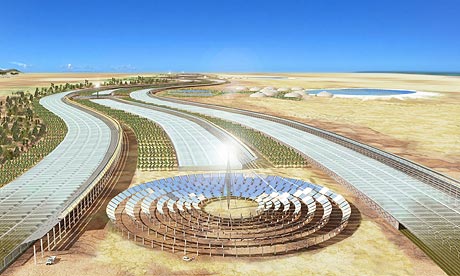Prize for ‘Sun in the box’ cooker
![]()
 At the heart of the idea is a simple black painted box… At the heart of the idea is a simple black painted box… |
A cheap solar cooker has won first prize in a contest for green ideas.
The Kyoto Box is made from cardboard and can be used for sterilising water or boiling or baking food.
The Kenyan-based inventor hopes it can make solar cooking widespread in the developing world, supplanting the use of wood which is driving deforestation.
Other finalists in the $75,000 (£51,000) competition included a device for streamlining lorries, and a ceiling tile that cools hot rooms.
Organised by Forum for the Future, the sustainable development charity founded by Jonathan Porritt, the competition aims to support concepts that have “moved off the drawing board and demonstrated their feasibility” for reducing greenhouse gas emissions, but have not gained corporate backing.
Jon Bohmer, Kyoto Energy |
“The Kyoto Box has the potential to transform millions of lives and is a model of scalable, sustainable innovation,” said Peter Madden, the forum’s chief executive.
It is made from two cardboard boxes, which use reflective foil and black paint to maximise absorption of solar energy.
Covering the cooking pot with a transparent cover retains heat and water, and temperatures inside the pot can reach at least 80C.
As many as two billion people in the world use firewood as their primary fuel.



